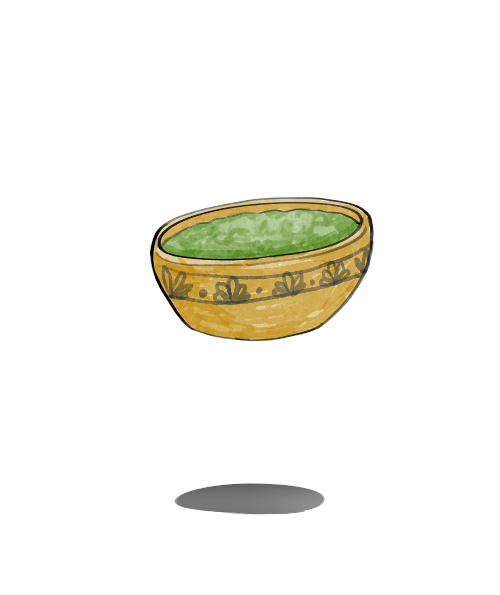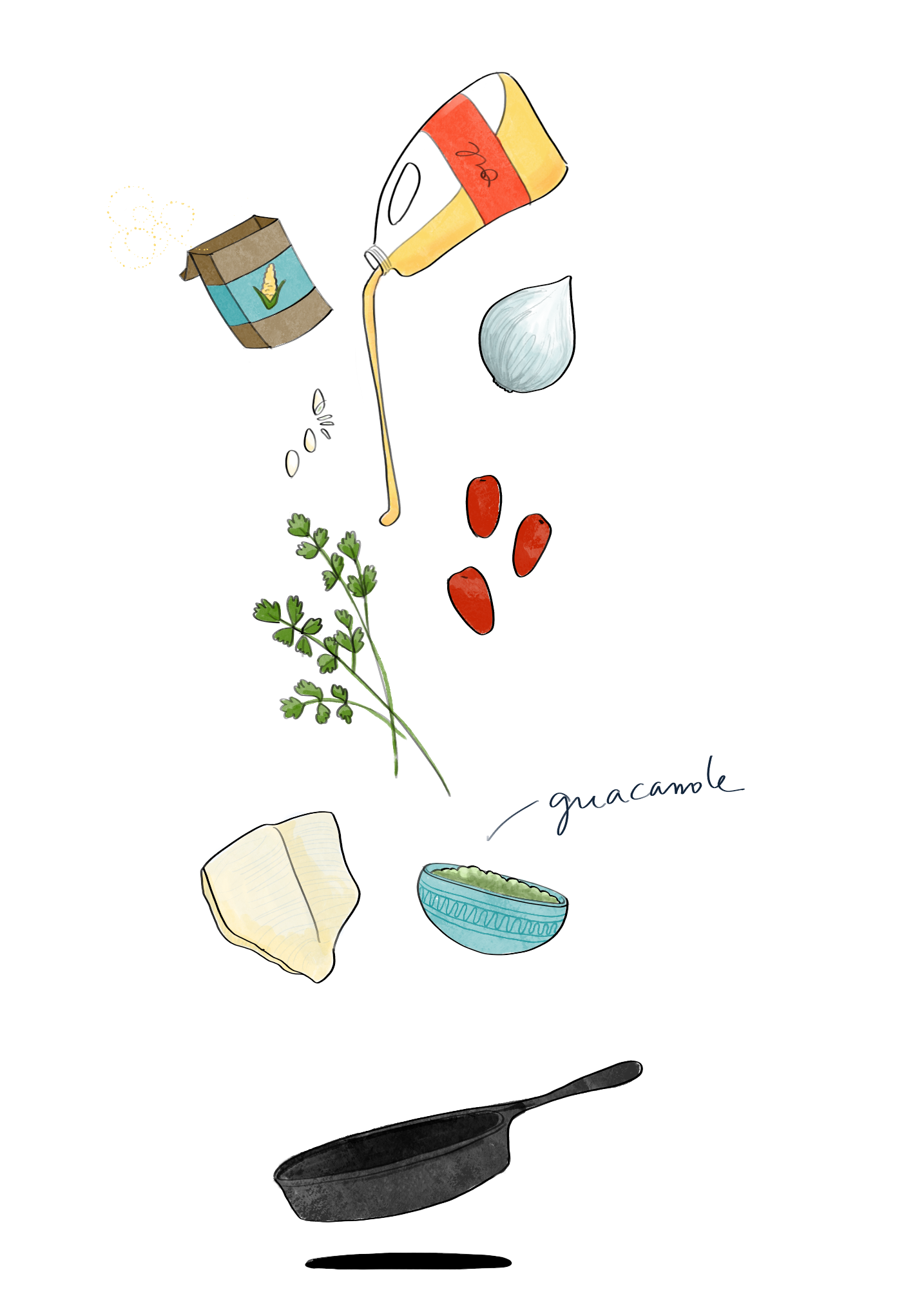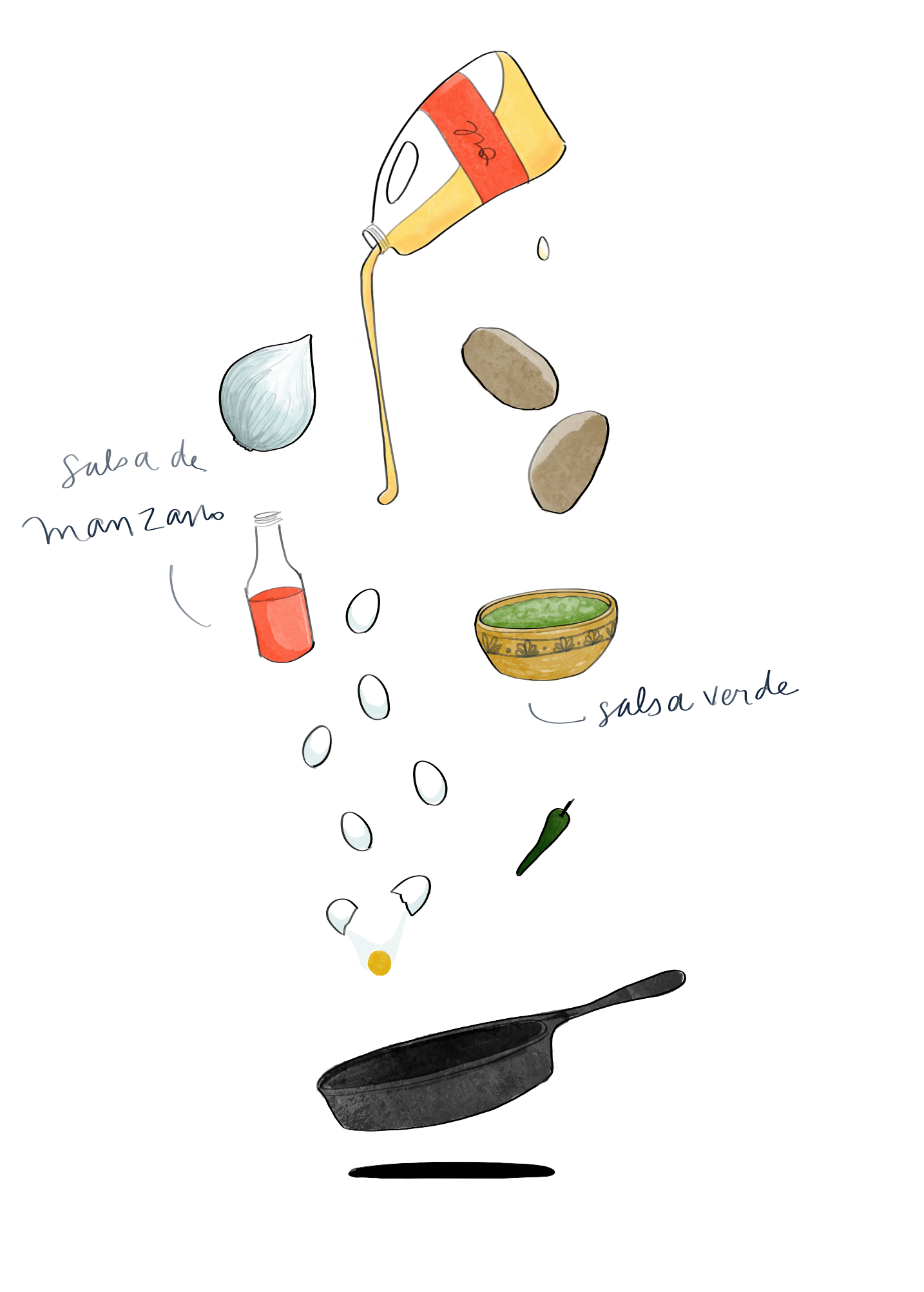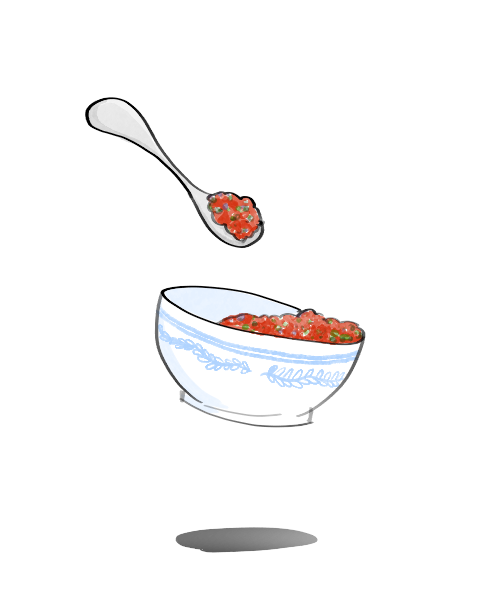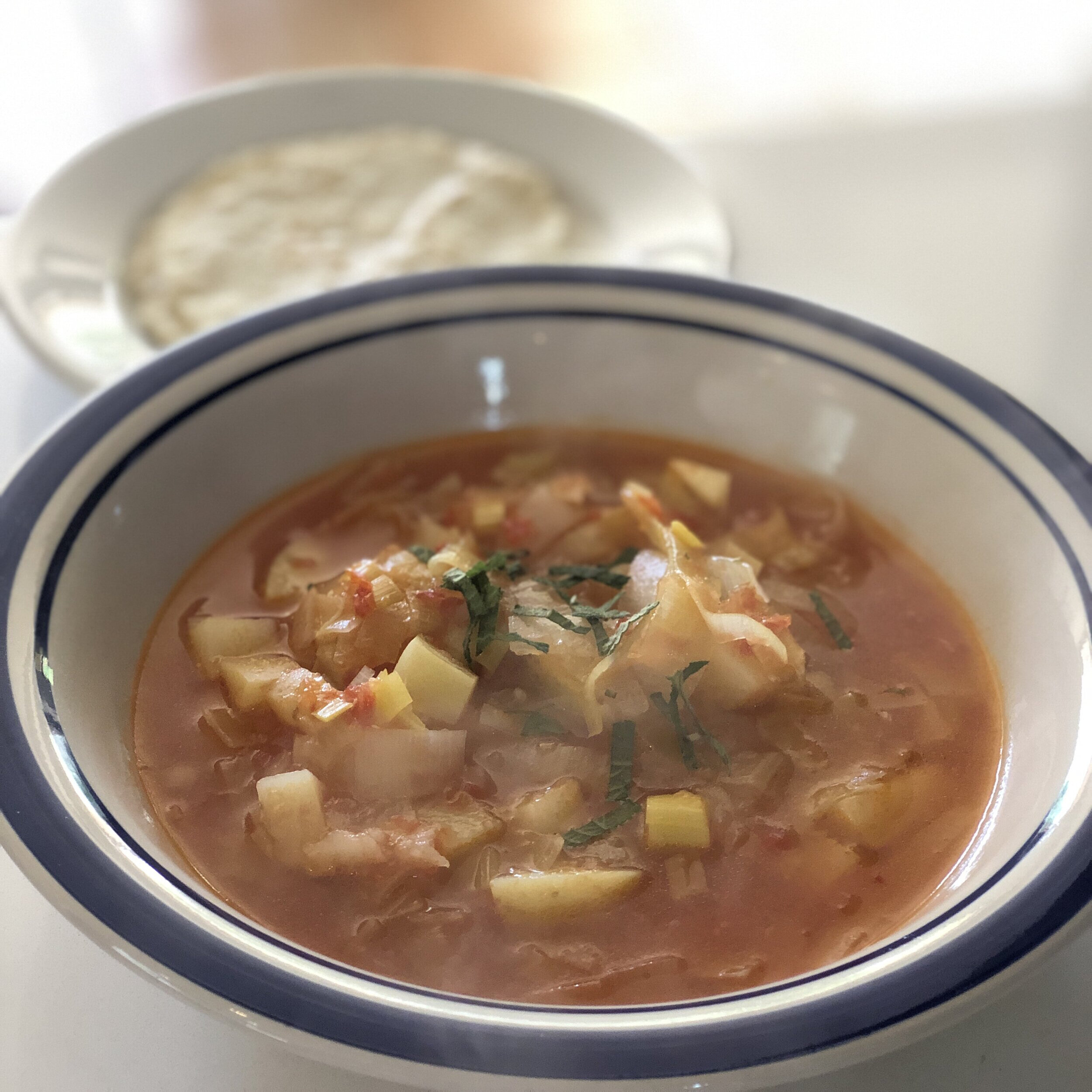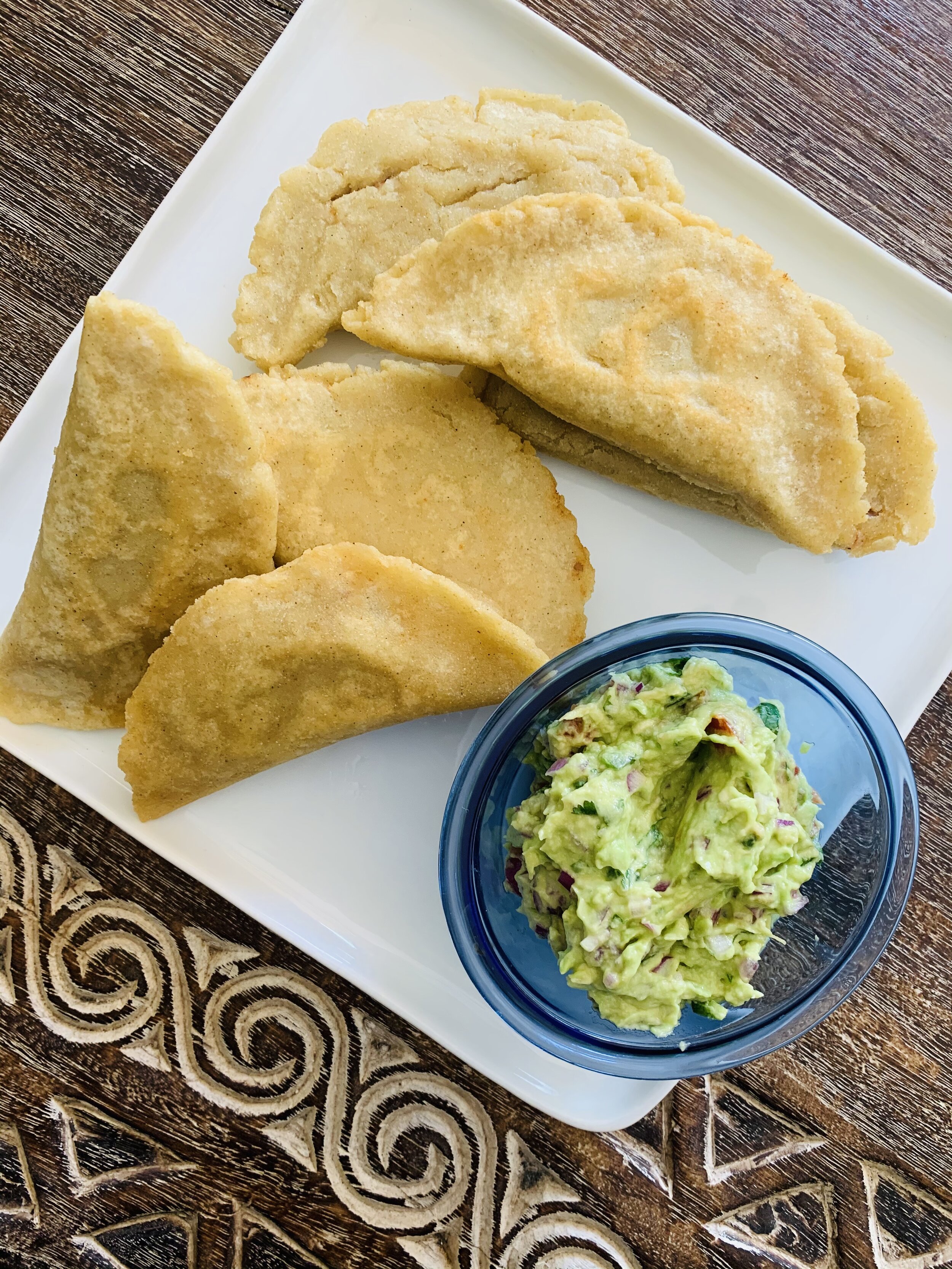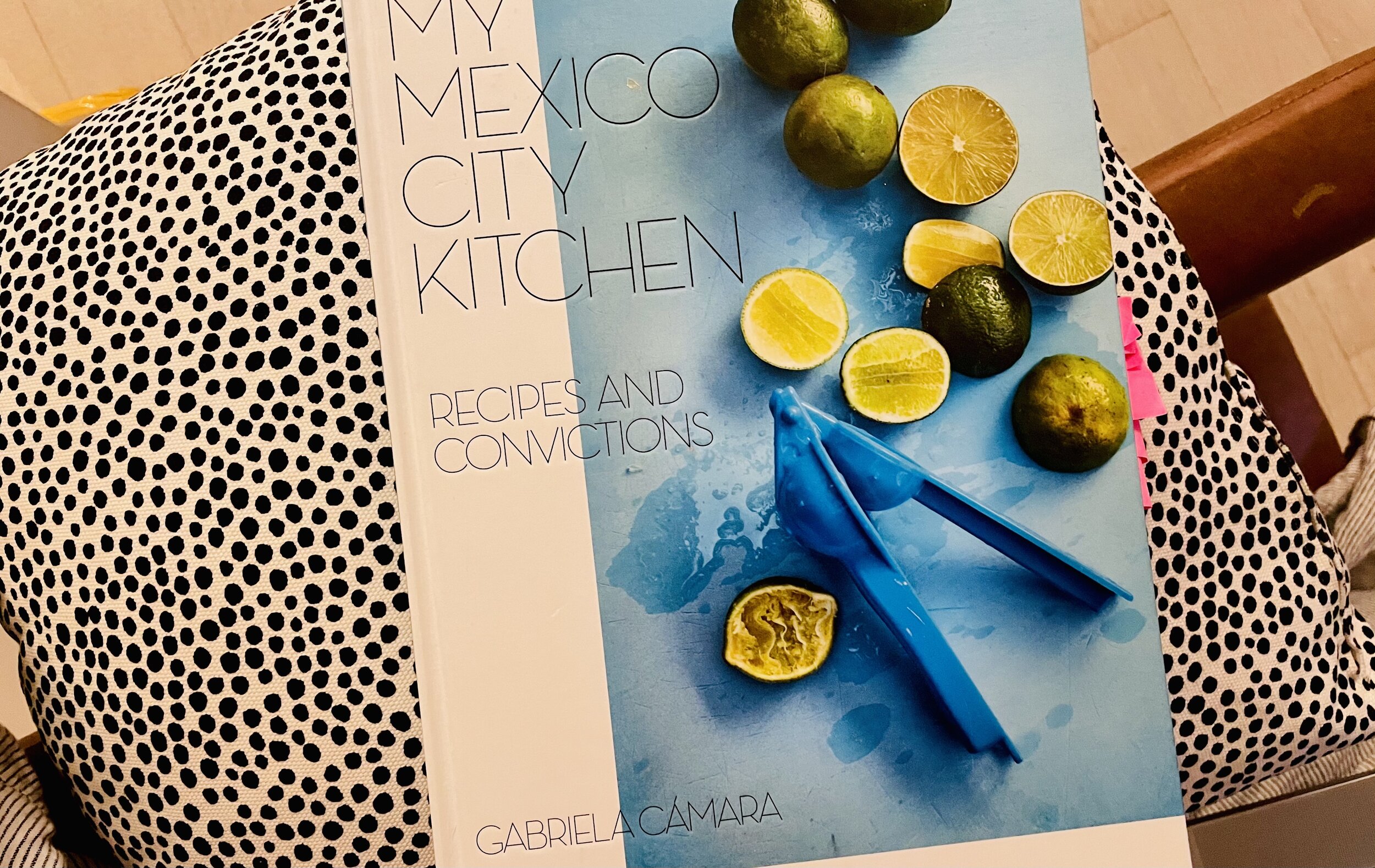
Ode to Tortillas
My Mexico City Kitchen by Gabriela Camara
Early in the pandemic I signed up for a Masterclass subscription. This was back when the reaction to be stuck at home was widely to learn a new skill, write a novel, plant a garden. This is when I harboured fantasies from watching Gabriela Camara’s Masterclass that I might learn about nixtamalization and start grinding heritage corn into fresh masa for the most tender and flavourful tortillas. By the time the City of Toronto was erecting barriers around the cherry blossoms to prevent gawker superspreader events, I had ordered this cookbook but had abandoned fresh masa, my container garden, wood-fired Montreal bagels and as my dear late friend Freddy Vatcha would say, thrown the equipment into the closet along with my skateboard, tennis racket, ukelele, and magician’s kit. Here’s the rub though: I spent a bunch of my childhood living in Guatemala with my mom and I know what a fresh tortilla tastes and smells like. I also crave hearty breakfasts with rich salsas topping fresh eggs and bowls of fruit, fried plantains. There are some bites that transport me but they’re few and far between. The pozole at Tacos el Asador in Toronto, for example. Not a small part of me is hoping to find that same nostalgic jolt in this book.
The recipes
Disclosure: I wasn’t in Toronto when I cooked this book. I was in Costa Rica. While Costa Rica and Mexico share some agriculture and climate, there are certain ingredients that would be easily found in Guatemala or Mexico but just were not available to me and that could have been my location specifically. Namely: dried chiles, high quality masa, poblanos, serrano chiles (I had manzano and jalapeno), or yukon gold potatoes. I’m writing this meal plan up to the book, but I made do with substitutes. So, if you can’t find tomatillos, for example, you can make extra salsa a la Mexicana for the chilaquiles. This is a very versatile meal plan. I used Maseca instead of good masa harina. I hear Bob’s Red Mill is better, and if you are in the US you can order Masienda (I actually contacted them directly and worked out some shipping to Canada). Don’t be a hero! If you’re not into the fresh tortillas then go get some high quality fresh ones from the grocery store. Mine has some great options in the freezer section.
The prep lineup is a lot shorter than my other meal plans, but you will be cooking tortillas and prepping pico de gallo and guacamole as you go, so it’s a trade off.
Prep Lineup
Crema ácida (p.65)
Tortillas (p.72)
Caldo de pollo (p.88)
Salsa mexicana (p.49)
Frijoles aguados (p.84)
Salsa verde (p.43)
Pico de gallo (p.44)
Salsa de manzano (p.46)

Breakfasts
Huevos a la Mexicana (p.101)
Huevos pochados en sopa de frijoles (p.98)
Chilaquiles (p.118)
Lunches
Sopa de papas y poro (p.7)
Pescadillas (p.200)
Tortitas de plátano macho con frijoles (p.202)
Dinners
Chiles rellenos con frijoles refritos y queso
(p. 226)
Pollo o peurco en mole verde (p.270)
Tortilla española con chile serrano (p.204)
Shopping list
I always assume you have salt, pepper, olive oil, and flour.
Vegetables & fruits
Avocado (3)
White onion (8)
Roma tomatoes (15)
Cilantro (3 bunches)
Serrano chile (10)
Lime (1)
Manzano chiles (6-8)
Garlic (2 bulbs)
Epazote*
Leek (1)
Yukon gold potatoes (500g)
A few sprigs oregano or thyme
Plantains
Tomatillos (10)
Poblano chiles (4)
Green beans (450g)
Bananas (4-6)
Lemon
Fennel (1 bulb)
Carrots (2)
Bay leaves
*sub with avocado leaf or dried oregano or marjoram if you can’t find it
Dairy & Freezer
Eggs (17)
Chevre
Butter
Heavy cream (1L)
Buttermilk
Feta cheese
Cotija or ricotta salata
Mozarella or good queso Oaxaca
Spices
Ground cinnamon
Ground cloves
Ground ginger
Pantry
Masa (ideally fresh) or high quality masa harina like Masienda or Bob’s Red Mill
Dried beans (black, red, or pinto)
Pumpkin seeds
Rice or egg noodles (for mole)
Walnuts
Baking powder
Sugar
Dulce de leche or cajeta
Gelatin
Meat & Fish
One whole chicken if you are making stock, or 650g chicken thighs
Chicken stock (or make your own)
1/2 lb wahoo(ono) or mackerel
Optional
For the chicken stock
You will be using the carcass from the roasting chicken
Prep
The day before
5 minutes
If you are using conventional beans, soak them overnight. If you are using beans you know are fresh (such as Rancho Gordo, beans in a country where a lot of beans are eaten, or beans from a farmer’s market) then you can cook them without soaking them.
Mise en place
30 minutes
Break down the chicken: If you’ve never broken down a chicken, this is going to be fun. Find a video or some instruction on Youtube that shows you how to break it down so that you have 2 breasts, 2 legs, and a nice clean carcass.
For the chicken stock: Chop one onion and one bulb of fennel.
For the salsa Mexicana: Chop 1 white onion, step and seed 2 serrano chiles, chop 2 garlic cloves, core and seed 5 roma tomatoes (discard the juices), mince 5g cilantro leaves.
For the salsa verde: Remove the husks from 10 small tomatillos. Rinse the tomatillos and cut them in half. Cut the tops off of 2-4 serrano chiles and cut them in half. Remove the seeds or, if you prefer your salsa hot, leave the serranos intact without their stems. Cut a white onion in half, dice half and leave the other half intact. Peel a large garlic clove. Chop 10g cilantro.
For the leek and potato soup: Core and quarter 2 roma tomatoes. Cut 1 leek in half lengthways and wash thoroughly. Cut the white parts only into 1/8-inch thick slices. Peel and dice 1 potato or cut it into thin sticks.
For the mole: Quarter 1/2 a white onion. Stem, core, and seed 2 serrano chiles. Cut 1lb green beans into 1-inch pieces.
Always wear gloves or take precautions when working with chiles. Even if you don’t get it in your eye, it can still burn the skin on your hands and be really uncomfortable.
Start cooking
3.5 hours
Start the caldo de pollo
Camara makes her stock using chicken breasts, but we need chicken for the mole so I’m calling to break down a whole chicken and use the carcass and wings. If you prefer to use chicken breast, make sure they are bone in, and then reserve the meat after you make the stock.
In a large stockpot, combine the onion, 2 cloves of garlic, the fennel, 2 carrots, 2 bay leaves, the chicken carcass and wings, about 5 cups of water and 1 tsp salt. Bring to boil and then decrease the heat and simmer for 1 hour.
Start your beans
Rinse 3 cups of beans and remove any debris. Place them in a medium pot and cover with 4 inches of water above the beans. Add 1 garlic clove and 2 sprigs of epazote, avocado leaf, or 1 tbsp dried oregano or marjoram. Bring the eater to a boil and them immediately decrease the heat to maintain a low simmer and cover the pot.
Make the salsa Mexicana
Warm 2 tbsp olive oil in a small, heavy-bottom saucepan over medium heat until hot but not smoking. Add the onion and chiles and sauté until the onions is translucent but not browned. Add the garlic, tomatoes and cook for 10 minutes. Transfer the vegetables to a blender and blend until completely pureed. Return the mixture to the pan and simmer over low heat for another 10 minutes, until the sauce has reduced by about one-third. Add cilantro and salt. Store. This salsa is served hot and can stay in the fridge for up to 5 days.
Check in on the beans
After 30 minutes, stir your beans to make sure the ones on the bottom are rotated with the ones on the top. Add more water if needed to maintain 2 to 3 inches over the top of the beans. Cover and simmer.
Make the crema ácida
In a glass jar, combine 2 cups of cream with 1/4 cup of buttermilk. Cover the mouth of the jar with several layers of cheesecloth or a dish towel and let sit for 24 hours at room temperature. If your home is chilly, you can set the jar on top of the refrigerator or in the oven with the light one. After 24 hours, screw on the lid of the jar and refrigerate 24 hours before using. This will last in the fridge for up to 10 days.
Check in on the beans again
Taste one bean for doneness. They probably won’t be done yet, but you should start testing them every ten minutes, stirring gently each time and adding more water if needed. They should cook until they’re a bit softer than you think they should be but are still whole with their skins intact. When they’re cooked, add salt to taste.
Make the salsa de chile manzano
Preheat the broiler. Place the 6 to 8 manzano chiles on a baking sheet and broil for 15-20 minutes, checking every 5 minutes and rotating with tongs so they get evenly charred. they should slump, feel completely soft, and be blackened in spots.
Transfer the chiles to a plastic bag or a closed container to sweat so the skins loosen and peel away more easily. Once they are cool, put on gloves and use your thumbs to slit them open. Remove the stems and black seeds. Peel the chiles and discard the skins. Transfer to a blender and puree until it is as smooths as possible. Add 2 tsp salt. With the blender running, drizzle in (slowly!) 120ml extra virgin olive oil. The mixture should emulsify to the consistency of mustard. Taste for salt and store in the fridge. It will last for up to 2 weeks.
Make the salsa verde
Put all the vegetables you prepped except the diced onion and cilantro along with 1 tbsp sea salt into a medium saucepan. Cover with just enough water and bring to a boil over medium-high heat. Decrease the heat to maintain a simmer and cook until the tomatillos become more translucent and the chiles have going from bright green to faded khaki colour. Put everything in a blender including the liquid and puree. Return to the saucepan and simmer over low heat until reduced by about one-third. Cool and then add the minced onion and cilantro. Taste for salt. Store in the fridge for up to a week.
Finish the stock
Line a colander with several layers of cheese cloth and set it over a bowl. Strain the stock, and chill, reserving x cups for the leek soup and x for the mole.
Make the Leek soup
In the jar of a blender, combine 1 garlic clove, the roma tomatoes, 600ml chicken stock (caldo de pollo), 1/2 tbsp sea salt and blend to liquify. In a large Dutch oven, warm 1/2 tbsp olive oil over medium high heat until shimmering. Add the leeks and fry until translucent, 3 to 4 minutes. Add the contents of the blender and the potatoes and bring to a boil. Decrease the heat and simmer for about 10 minutes, or until the potatoes are soft. Taste and add more salt if needed. Cool and store.
Make the mole
In a dry skillet over medium-high heat, toast 150g pumpkin seeds until they turn golden brown, being careful to stir them regularly so they don’t burn. In a jar of a blender, grind the pumpkin seeds. Add the onion, 1 garlic clove, and the serrano chiles. Pulse to puree. Add 1 1/2 cups chicken stock and 1 cup of cilantro stems and leaves. Pulse to liquefy. Pour the content of the blender in a large Dutch oven or heavy-bottom pot and turn the heat to medium-low. Cook, stirring, until the sauce is simmering, about 15 minutes. Cool and store.
Refry some beans
Store about two-thirds your beans and their water in the fridge for later in the week. Take the other third and drain, reserving the liquid. Mash the beans to a coarse paste with a potato masher or fork. Gradually add in a few tablespoons up to about half a cup of the cooking liquid as you mash to obtain the consistency you want.
Warm 1/8 cup of olive oil in a skillet over medium heat until hot but not smoking. Add 1/2 a white onion, minced. Cook until translucent but not brown. Add the beans and 1/4 tsp salt and stir for about 5 minutes. Drizzle in more cooking liquid if needed to maintain consistency. The beans should form a thick but creamy paste. Cool and store.
Roast the poblano chiles
On an ungreased skillet or comal over a high heat, char 4 poblano chiles, turning them every couple of minutes. You’re looking for uniform blistering, but you don’t want to become too soggy in the process. Once they’re uniformly blistered, and before the flesh is charred through completely, put them in a plastic container with a tight fitting lid and let it sweat for 10 minutes. Remove the skin from the chiles, trying not to puncture them. Use a sharp knife to slice into the pepper on only one side, reach in and remove all the seeds, leaving the stem intact. Store in the fridge.
Ongoing recipes
You will be making these recipes as you go to accompany different meals. In the month I cooked from this book, I got really good at whipping up some pico de gallo on the fly and from what I had on hand. For example, tossing in some mango or passion fruit when I had it, adding some extra chile, subbing out white onion with red. Tortillas became second nature although I didn’t have a press. So, I pressed the little ball of masa between two pieces of plastic, and then used a heavy pot to press down. This wasn’t ideal, obviously, but it did the trick. I also challenged myself to make them nice and thin like Camara’s which I almost got the hang of by the end of the month.
Pico de gallo
This recipe will make 2 cups, so depending on what you are making it for you might want to halve it. Of course, no one ever suffered from having some pico in their fridge for an afternoon snack.
Dice half an avocado, half a white onion, and 3 Roma tomatoes. Mince 1 tbsp cilantro leaves, and 1 serrano chile (with or without seeds). In a bowl, gently stir together the vegetables, the juice of 1 lime, 1 tbsp olive oil, and 1 tsp salt.
Guacamole
I cut this recipe in half from the book because it’s a lot of guacamole!
Spoon the flesh of 2 avocados into a medium bowl. With a fork, mash the avocado to the texture you prefer. Add 1 tsp salt, the juice of 1 lime, 1/4 white onion, minced, 1/2 finely chopped roma tomato, 1/2 minced serrano chile, and 1/8 cup finely chopped cilantro. Drizzle in 1/2 tsp extra virgin olive oil and mix well. Adjust the flavour to your preference with lime, salt, oil, and chile.
Tortillas
This book is a lot about masa, and its versatility. There is a deep respect for masa underpinning Camara’s philosophy as it’s watching women make tortillas that she credits with falling for food in her childhood. She’s a masa expert, and so I recommend reading the whole section in the book and even checking out her masterclass.
Whether using masa harina or fresh masa, you want to paste to be the consistency of stiff cookie dough. So add water a little at a time until you get there. You are cooking without oil so if you have a comal, amazing, otherwise a plancha or skillet will do the trick. Heat it over medium heat.
Sandwich a golf-ball-sized ball of masa between two sheets of plastic (cut a ziploc on two sides, leaving it attached on only one side and put your masa in between the two flaps) and press with a tortilla press, or if you’re like me and you don’t have one, flatten with a dutch oven or other heavy pan on your counter (this will not yield an even tortilla unless you’re really good at it). This is the part now that requires practice. You will have a little tortilla that is flattened between two sheets of paper. Put it in your non-dominant hand and gently peel off the first layer of plastic. Flip it to your dominant hand and peel off the second side of plastic and then put the raw tortilla on your comal, plancha, or skillet.
Watch for the edge of the tortilla to turn opaque. This is how you know it’s cooking. After about 30 to 45 seconds, flip it to the other side and let it cook for another 30 to 45 seconds. Now flip it back to the original side for another 30 seconds. If you’re really good at it, when you flip it the last time it will start to puff a little. I could not get this to happen with any regularity using Maseca and without a press because I believe the tortillas were too thick but they were still delicious. The book has a ton of troubleshooting techniques so I really recommend diving into it.
Breakfast
Huevos Pochados en Sope de Frijoles
You will need to make some fresh pico de gallo and tortillas for serving (see above). If you’re making this before the chilaquiles, I recommend making a couple extra tortillas and storing them in the fridge.
In a saucepan using an immersion blender, blend half of the liquidy beans that you prepped and enough bean broth so that you get the consistency of creamy soup, not refried beans.
Bring the pureed beans to a boil over medium heat, then decrease the heat to low and simmer.
Crack an egg into a measuring cup. Lower into the simmering bean soup, submerging the bottom of the measuring cup in the soup and then easing the egg out. Repeat with 3 more eggs.
Cook for 4 minutes for a well-set white and runny yolks.
To plate, ladle each egg with the bean soup into individual serving bowls. Top with a sprinkle of salt and a spoonful of pico de gallo. Serve with tortillas.
Huevos a la Mexicana
Make some tortillas for serving (see above). If you’re making this before the chilaquiles, I recommend making a couple extra and storing them in the fridge.
Warm half of the Salsa Mexicana that you prepped in a skillet over medium heat. Warm the remaining liquidy beans that you made over a medium heat.
Meanwhile, in a bowl, whisk 4 eggs and 1/4 tsp salt. Add 40g chevre, cut into 1/2-inch rounds and keep whisking until it’s fairly well incorporated.
In a large skillet over low heat, melt 1/2 tbsp butter. Add the egg-cheese mixture and cook, stirring constantly so that the eggs stay moist and creamy. Continuously agitate the eggs while they cook, never letting them stick to the bottom of the pan. When the scrambled eggs are a creamy yellow and just beginning to set, remove the pan from the heat and top with the hot salsa.
Garnish with cilantro and serve immediately with beans, tortillas and avocado.
Chilaquiles
You will need about 6 tortillas for this recipe so hopefully you have some leftovers but if not, make a couple tortillas.
Cut 6 tortillas into 6 to 8 wedges each. Finely mince 30g white onion, mince 5g cilantro leaves, cube 40g feta cheese.
Warm 1/2 tbsp safflower or other neutral frying oil in a wide skillet over medium heat. Pour 430ml salsa verde in and let it cook at a low simmer for 10 to 15 minutes, thickening slightly.
In a large saucepan over medium heat, warm 2” of safflower oil. Line a plate with a brown paper bag or paper towels. Working in a couple of batches so as not to overcrowd them, lower the tortillas into the oil with a slotted spoon and fry them until they’re crispy. You really want crispy here because if they’re chewy they’re going to be hard to eat and disappointing. Once they’re brown and crispy but not overcooked, transfer them to the plate to drain. Transfer the remaining oil (about 1/4 cup) to the frying pan where you’re going to cook your eggs.
Remove your salsa from the heat and wait for it to stop simmering. Add 30g crema ácida to the salsa and stir until well incorporated. Drop all your chips into the pan. Stir once or twice to coat with sauce, being very gentle. As soon as they have absorbed most of the sauce, stop stirring.
Warm the oil in the frying pan until sizzling. Once hot, crack 2 eggs into the pan. Using a spoon, basted the whites with hot oil while they’re frying, making sure they’re cooked completely and crispy at the edges. The eggs should cook in about 1 minute. Depending on how many eggs you want, you could move these to a plate and fry another couple of eggs.
Spread a cup of the saucy chips on each plate. Top each with 1-2 fried eggs and garnish with onion, cilantro, feta, and avocado.
Lunch
Leek and potato soup
Warm the soup. Divide between two bowls and garnish with the leaves of a few sprigs of oregano or thyme.
Pescadillas
You will serve these with guacamole, so use the recipe above to prep that.
Chop 70g onion and 2 garlic cloves. Core and dice 1 roma tomato. Slice 230g wahoo or mackerel. Mince 40g epazote or cilantro.
Heat 2 tbsp vegetable oil in a large skillet over medium high heat until shimmering but not smoking. Add the onion and cook until translucent but not browned. Add the garlic and cook for 1 to 2 minutes until fragrant. Add the tomatoes and bring all the ingredients to a boil, then decrease the heat to low and simmer for about 5 minutes. Add the fish, epazote, and a pinch of salt and pepper. Continue to simmer until the fish is cooked and the majority of the moisture from the tomatoes and onion has evaporated, about 15 minutes. Remove the pan from the heat and let it cool.
Make a golf ball-size ball of masa the same way you would when making a tortilla and press it the same way. Once the dough is flattened between the two sheets of plastic wrap, remove the top sheet but leave the bottom sheet.
Make sure the fish filling isn’t too wet. Pour off any excess liquid. Place a spoonful in the middle of the masa disk, and then user the plastic wrap to fold over and pinch the edges together to seal. Repeat to make another 2-3.
Line a plate with a brown paper page or paper towel. In a large heavy-bottom skillet or wok, heat a couple inches of grapeseed or safflower oil to 350˚F/180˚C. Gently place the pescadilla in the oil and fry until golden, 8-10 minutes. Do not crowd the pescadillas in the pan or they’ll stick together. Transfer the browned pescadillas to the plate and let them cool slightly.
Serve with guacamole and lime.
If you have extra fish filling like I did, you can make a tostada from page 253 of the book or use it as a taco filling with some fresh tortillas and guacamole.
Tortitas de Plátano Macho con Frijoles
Place 2 half-yellow, half-black (but not soft) plantains, pointy tips cut off, in a saucepan large enough to fit them. Add water to cover and 1/2 tbsp salt and bring to a boil over medium-high heat. Decrease heat to low and simmer for 10 minutes. Remove the boiled plantains from the water. Once they’re cool enough to hanfle, peel them and remove their seeds, which should slip right out. Place the plantains in a medium bowl and mash them. Taste to make sure they’re salty enough and add salt if needed. Add the 1tbsp all purpose flour and 20g grated Cotija or ricotta salata.
Oil your hands slightly so the plantain doesn’t stick on your hands. For the plantain paste into round or oval patties with slightly raised edges. Put 1 tbsp refried beans at the centre of each patty and then push the edges closed to seal it in. This should make 4 patties.
Line a plate with a brown paper bag. In a large, heavy-bottom skillet or wok, heat 1 cup vegetable oil to about 275˚F/135˚C. Because plantains have so much sugar in them, they’ll burn easily (see photos). Gently lower in as many as you can without crowding them. Fry for 4 to 5 minutes per side, until they’re golden brown. Using tongs, transfer the fritters to the plate to drain.
Serve with salsa verde or another salsa of your choosing.
I definitely failed here to execute on these fritters. I would recommend shaping them like kofta instead of patties and lowering the heat if they are browning too quickly.
Dinner
Chiles rellenos
Chop 1 white onion. Core 4 roma tomatoes and cut them in half.
Place the onion, 1 clove garlic, and the tomatoes in a blender. Add 1/2 cup water and liquefy.
Heat 1/2 tbsp olive in a dutch overn or stockpot over high heat. Once it’s shimmering but not smoking, suspend a fine mesh strainer over the pot and pour the liquefied tomato sauce over the hot oil. Add 1 tsp sea salt and bring the sauce to a boil, then immediately decrease to a simmer. Taste and season.
Using an electric stand mixer fitted with the whisk attachment, whip up 2 eggs for 3 to 5 minutes until the hold firm peaks (I actually split the egg and whisked the whites first, then added the yolks. I don’t know if this helped even remotely).
Place your chiles on a plate, slit-side up. Inside each pepper, place 1-2 tbsp refried beans and top with 1 to 2 tbsp shredded whole-milk mozzarella or good queso Oaxaca. If you want, you can close each pepper with a toothpick, but just be careful to remove them afterwards (I found I didn’t need to do this). Remember not to overstuff the chiles because you don’t want them to burst in the pot.
In a medium heavy-bottom skillet, warm 1 cup rice bran, safflower, or vegetable oil with a high smoke point until it reaches 375˚F/190˚C on an instant read thermometere. Gently dip each stuffed chile into the whipped egg, very carefully flipping it over so that both sides get well coated and using a spatula to spread the egg onto the top side. Then lower the battered chile into the oil and let it fry for about 2 minutes per side, flipping it carefully. You know it’s done when it gets golden and puffs. Remove the chiles with a slotted spoon, letting any excess oil drip back into the pot, and carefully place the chile in the hot tomator sauce. Repreat with each chile until that are all in the pot of tomato sauce. Don’t worry about crowding them. Once they are fried they will keep their shape.
Bring the tomato sauce back up to a boil and then decrease to a simmer and cook the chiles for a minimum of 5 minutes so that all the peppers are cooked through and hot. Feel free to leave them simmering on the lowest heat for longer if you’re still fixing the rest of your dinner or waiting for guests to arrive. You really can't overcook the chiles.
Laughably this was my third attempt. I know she’s not cute but she’s mine.
Pollo o puerco en mole verde
Heat the mole sauce you prepped until it’s simmering in a large dutch oven.
Warm 2 tbsp oil in a large skillet over medium heat. Once it’s shimmering, sear the chicken in batches (I halved the recipe, and it calls for 3/4 lbs chicken which should yield 2-3 servings. You broke down a chicken earlier and I’m not sure how big your chicken it, but I think you’ll be fine cooking it all and then just making sure you’re covering it at the right level so it cooks evenly). Don’t salt the meat yet, or your mole will turn watery. Seat the meat all over and transfer into the simmering sauce.
Cook over low heat for 45 minutes. Top the sauce with some chicken stock if it doesn’t cover the chicken. Once the meat is tender and the sauce is thick, add the green beans and the 1 tbsp salt and cook for 10 to 15 minutes more. Taste and add more salt if needed.
Serve with rice or over egg noodles.
Lessons and leftovers
Do you have extra carrots? I always have extra carrots. You can use them to make the Zanahorias con Limón y Chile Piquin on pg. 38. If you have a ton of leftover crema ácida, this is just sour cream, so use it as you like in baking, as a garnish, etc. If you bought an enormous bag of masa harina and you haven’t used it all, go back to the book! There are a ton of great recipes to use up your masa. I also love tamales, especially with chicken and prunes inside, and pupusas, which are tricky to get the hang of but absolutely high reward.
The cookbook is a lesson in technique. The ingredients repeat throughout the book, which makes it seem deceptively easy, but masa as a tortilla versus a fried chip, versus a tamal, versus a pescadilla is not the same. The chiles rellenos are technically tough. The plantain fritters are technically tough. But the grace of these recipe is that the ingredients and flavours are so forgiving. This isn’t like if you overcook a pasta you get mush. If you burn a plantain fritter you still have caramelized plantain sugar and salty rich smooth refried beans. I do regret not having access to a lot of ingredients. I would like to make a rich mole full of different chiles, and I can now that I’m home but when I didn’t have access at the time. I can see updates to this post cropping up as there are a lot more dishes in this book I want to cook.






